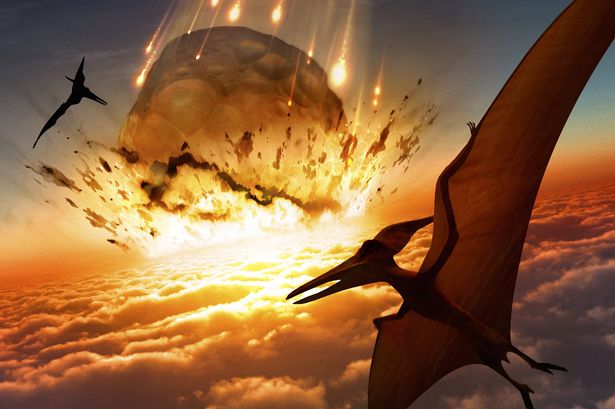Scientists say they have discovered new details about the day an asteroid hit Earth and killed off the dinosaurs.
In a new study, an international team of researchers led by the University of Texas at Austin has found evidence of the first 24 hours post-asteroid impact which confirms these Cretaceous-Tertiary Mass Extinction scenarios.
Close examination of the rock layers stretching down hundreds of feet revealed that the crater was already packed with debris within the first 24 hours, with an estimated 425 feet of material filling the gaping hole within that first day. The layers of material act like a timeline, offering clues about the intensity of the impact and the sheer power that the space rock was packing.
“It’s an expanded record of events that we were able to recover from within ground zero,” Sean Gulick, lead author of the study, said in a statement. “It tells us about impact processes from an eyewitness location.”
Estimating the power released by the impact is difficult simply because it is unmatched in human history, and comparisons warp any sense of scale. However, in an attempt to put it into some kind of perspective, the researchers estimate that the power was equivalent to 10 billion World War II-era atomic bombs simultaneously detonating.
Anything even remotely close to the impact site would have been completely destroyed, and that includes wildlife, but the real killing blow came later, as dust and debris from the impact shrouded the planet in darkness and killed off plant life on a massive scale, toppling the food chain and causing mass extinctions the world over.















